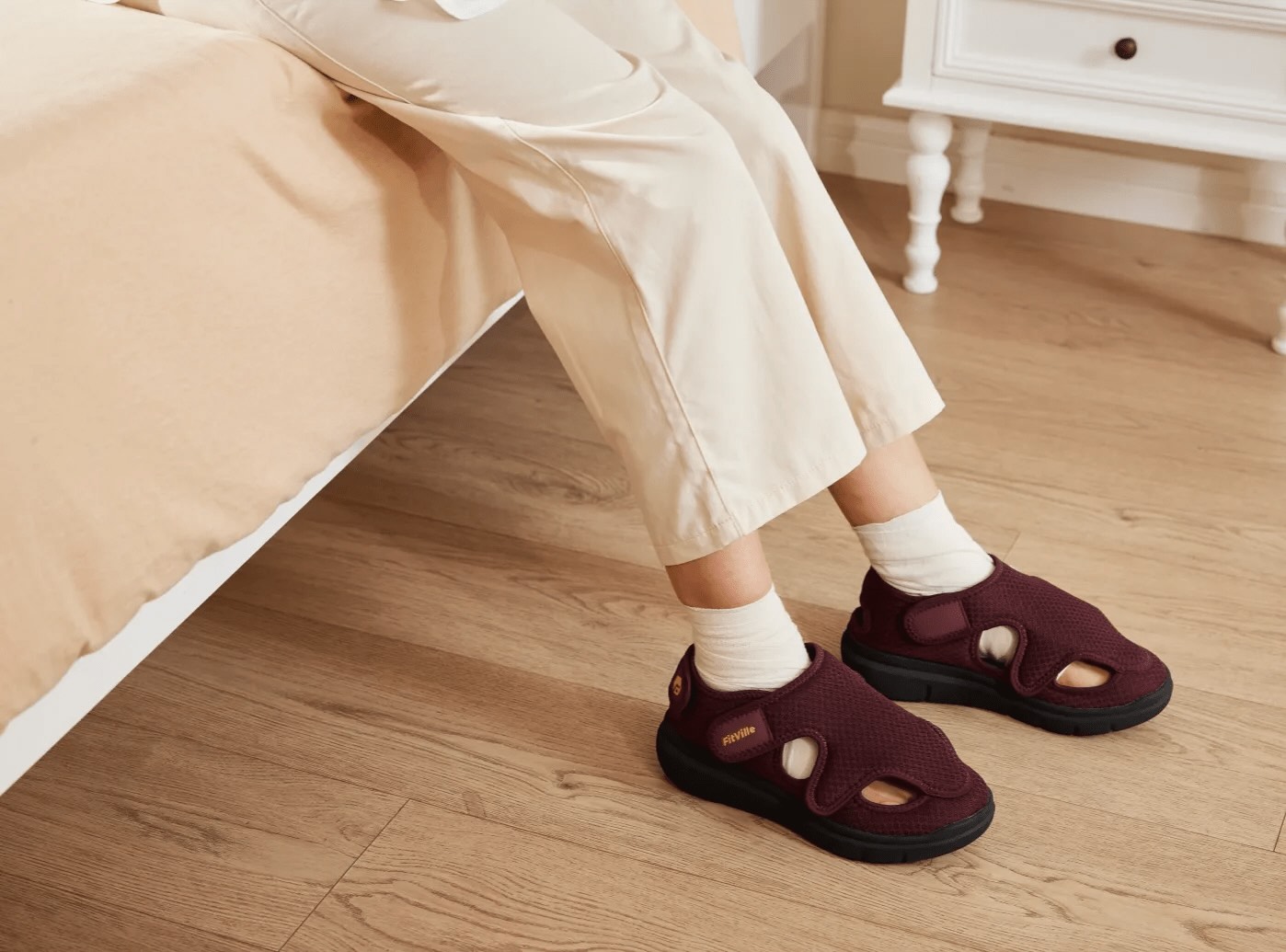
Diabetic neuropathy refers to nerve damage resulting from chronically elevated blood sugar levels. It develops gradually and often affects sensory nerves in the legs and feet, leading to numbness, tingling, or sharp pain. Studies show that up to 50 percent of diabetes patients over 40 experience some form of this condition.
When sensation decreases, even minor cuts or pressure points can go unnoticed and worsen over time. Poor circulation further delays wound healing, raising the chance of ulcers and infections. Proper footwear plays a vital role in minimizing these risks.
Shoes that pinch or rub can create blisters and calluses in areas with diminished sensation. High heels, open-toe sandals, and ill-fitting pairs increase pressure on vulnerable spots, accelerating tissue damage. One study found that 6 out of 10 people with diabetes wear the wrong-size shoes, underscoring the need for accurate fitting.
Footwear designed for diabetic neuropathy offers protective features that distribute pressure evenly and guard against injury. Proper shoes can reduce pain, improve balance, and boost confidence during daily activities. Over time, the right pair may help prevent costly medical interventions like ulcer treatment or surgery.
A well-designed diabetic shoe combines multiple features to safeguard feet without compromising comfort. The table below summarizes the core elements to look for.
Sources for these recommendations include Southwest Foot & Ankle.
Proper arch support helps maintain foot alignment and limits pressure on the ball and heel. Deep-cushioned midsoles absorb impact during walking, easing discomfort in areas with nerve damage.
A spacious toe area lets toes splay naturally and accommodates orthopedic inserts or custom orthotics. Extra depth prevents crowding, which can lead to corns, calluses, or hammertoe.
Smooth linings and minimal seams eliminate friction points that could cause blisters. Leather or moisture-wicking fabrics work best to reduce rubbing on sensitive skin.
Heavy shoes add unnecessary load and fatigue already vulnerable feet. Breathable uppers, such as mesh or perforated leather, promote airflow and manage moisture, cutting down infection risk.
Lace-up or hook-and-loop straps enable fine-tuning of fit, especially when swelling fluctuates throughout the day. Secure closures also help prevent the foot from sliding inside the shoe.
Accurate sizing is critical. Feet typically swell by midday, so measuring at the end of the day yields the truest fit. Always compare measurements against the brand’s size chart rather than relying on a single number.
Testing shoes when feet are at their largest helps avoid a too-tight fit later on. Patients should wear the same socks or orthotic inserts they plan to use daily.
Rotating between two or more shoe pairs gives each pair time to air out and maintain cushioning. A dry interior limits bacteria growth and prolongs the lifespan of support materials.
Medicare Part B may cover therapeutic shoes if a doctor certifies foot shape changes, past ulcers, or calluses that could lead to complications. Approval requires a prescription and fitting by a qualified provider.
Propét offers a range of models engineered for diabetic foot care. Key characteristics include:
These features help reduce the risk of cuts, bruises, and uneven pressure that can lead to ulcers.
A daily visual check can catch redness, swelling, or cuts before they worsen. Using a mirror or seeking help from a caregiver ensures all areas—especially under the toes and soles—get attention.
Gentle washing with mild soap and warm water removes bacteria without drying skin. After drying thoroughly, applying a non-irritating moisturizer prevents cracking and maintains skin integrity.
Regular podiatrist visits help monitor nerve function and detect early signs of trouble. A certified pedorthist or orthotist can recommend custom insoles or specialized shoes tailored to individual foot contours.
Choosing appropriate footwear is a foundational step in managing diabetic neuropathy. Shoes with arch support, seamless interiors, and adjustable closures help protect sensitive nerves and promote comfort. Consistent fitting practices, like measuring at the end of the day and alternating pairs, ensure long-term foot health. Individuals and caregivers should review this guide, consult healthcare professionals, and invest in shoes that meet these criteria to reduce risk and support daily mobility.
The best shoes for diabetic neuropathy should offer arch support, seamless interiors to prevent friction, and adjustable closures for a secure fit. Look for shoes with a cushioned sole and plenty of room for the toes to avoid pressure points and reduce the risk of sores.
It’s recommended to replace shoes every 6–12 months or when they show signs of wear and tear. Consistently wearing well-maintained shoes helps prevent unnecessary pressure on the feet, minimizing the risk of injury and discomfort.
To ensure proper fit, measure your feet at the end of the day (when they’re at their largest) and choose shoes that accommodate any foot swelling. Additionally, it’s helpful to alternate between different pairs of shoes to avoid excessive wear on one pair.
SOURCES:
https://us.solebliss.com/blogs/news/best-shoes-for-diabetes
https://www.bone-joint.com/the-importance-of-proper-shoe-selection-for-diabetics/
https://www.webmd.com/diabetes/shoes-and-diabetes
https://www.southwestfootankle.com/post/the-best-types-of-shoes-for-diabetic-neuropathy
https://propetfootwear.com/shop-by/condition/neuropathy/
